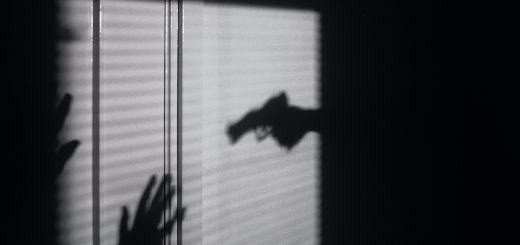R. v. Zacharias: SCC to Consider Alleged Charter Breaches in Drug Trafficking Case
On May 15, 2023, the Supreme Court of Canada [“SCC” or “the Court”] will hear the appeal of R. v. Zacharias, 2022 ABCA 112 [“Zacharias”]. The appeal is from the Alberta Court of Appeal [“ABCA”] and relates to alleged breaches of the accused’s rights under ss. 8 and 9 of the Canadian Charter of Rights and Freedoms [“Charter”]. Section 8 of the Charter protects the right to be free from unreasonable search and seizure by the state, and s. 9 guarantees the right not to be arbitrarily detained or imprisoned.
A majority of the ABCA held that they could not make findings on new arguments that were not argued or admitted at trial, and dismissed the accused’s appeal. Justice Khullar, in dissent, would have held that the evidentiary record was sufficient for the court to consider the new Charter breach allegations.
The Facts
In February 2017, Cst MacPhail lawfully stopped the appellant, Mr. Zacharias, while he was driving his truck (for details of the facts, see Zacharias, paras 14-21). The traffic stop occurred on Highway 1, near Banff, a known drug trafficking corridor. Cst. MacPhail noted a large suitcase among other luggage in the cab of the truck and a tonneau cover on the box. These observations, in combination with Mr. Zacharias’ conduct and responses to his questions, led Cst. MacPhail to suspect illegal drug activity. When he ran Mr. Zacharias’ name through police databases, Cst. MacPhail learned that three years ago, Mr. Zacharias had been the subject of a complaint involving the distribution of large amounts of cannabis and cocaine.
On these grounds, Cst. MacPhail detained Mr. Zacharias for investigative purposes and called for backup and a sniffer dog. Cst. MacPhail conducted a pat-down search and placed Mr. Zacharias in the back of the police vehicle. The police’s deployment of a sniffer dog to search the exterior of the truck indicated the presence of a controlled substance. Cst. MacPhail arrested Mr. Zacharias for possession of a controlled substance.
Police then conducted a search incident to arrest, which led to the discovery of 101.5 pounds of cannabis inside duffel bags in the back of the truck. Based on the quantity of cannabis, Mr. Zacharias was re-arrested for possession for the purpose of trafficking. He was then handcuffed and transported to the police detachment, where the police had him strip to one layer of clothing. After about six hours of detention, Mr. Zacharis was released.
Trial Decision
Mr. Zacharias alleged that the police breached his rights under ss. 8 and 9 of the Charter during the investigation and, as such, the drug evidence should be excluded under s. 24(2) of the Charter.
The trial judge found that Cst. MacPhail was a credible and reliable witness and accepted that he sincerely believed he had reasonable grounds to suspect Mr. Zacharias (for details of the decision below, see Zacharias, paras 22-31). However, the initial investigative detention and the sniffer dog’s search of the exterior of the truck were unlawful because Cst. MacPhail lacked an objectively reasonable suspicion for detention. As such, the judge held that there had been a breach of Mr. Zacharias’ ss. 8 and 9 rights.
The judge found that the observations and information Cst. MacPhail relied on to form his suspicion were weak indicators of drug activity which could also apply to innocent people. For instance, Cst. MacPhail relied on Mr. Zacharias’ nervousness and the presence of luggage in the cab of the truck as opposed to the box in the back. But, the judge noted, nervousness during police interactions is common and diminishes over time, as it did in Mr. Zacharias’ case. There was also an innocent explanation for keeping luggage inside the truck, like the weather being cold and not wanting it to freeze and get stuck. Most importantly, the information acquired by Cst. MacPhail from the police database was dated, and its source and reliability were unknown.
Despite finding Mr. Zacahrias’ Charter rights were breached, the judge admitted the evidence under s. 24(2) of the Charter. Section 24(2) allows courts to admit evidence obtained in a manner that infringes the Charter, provided that its admission would not bring the administration of justice into disrepute. The judge weighed the three factors considered under the s. 24(2) test. The judge found that while the seriousness of the breaches and their impact on Mr. Zacharias’ Charter-protected interests did not strongly favour exclusion, society’s interest in adjudicating the case on its merits favoured inclusion of the evidence.
The Crown later conceded insufficient evidence for two of the three charges made against Mr. Zacharias, and he was ultimately convicted only of possession of cannabis for the purpose of trafficking.
Appeal Decision
On appeal, Mr. Zacharias argued the trial judge erred by failing to consider later Charter breaches flowing directly from the unlawful investigative detention and sniffer dog search in the s. 24(2) analysis.
Majority Opinion
A majority of the ABCA held that an appellate court assessing additional arguments would change the case before the Crown, and as such, the majority held that the appeal should be dismissed (Zacharias, para 10). The Crown conceded the additional alleged breaches that the trial judge had failed to consider.
Referring to the recent SCC decision in R. v. Reilly, the majority held that judges are not required to consider any state conduct not argued at trial (Zacharias, para 4). The majority found that the trial judge’s failure to expressly include the investigative detention in the analysis did not impact the result.
Dissenting Opinion
The dissent found that new issues on appeal may be allowed where there is a sufficient evidentiary record to decide the new issue. This is particularly true where the matter can be decided without prejudice to the other party, and where there are adequate factual foundations to support a determination on the new issue (Zacharias, para 47). Justice Khullar was satisfied that the new issues regarding the additional breaches could be decided without adducing further evidence, instead relying entirely on the trial judge’s factual findings. The dissent went on to consider each stage of the s. 24(2) test (for details, see Zacharias, paras 55-65).
The first branch of the test concerns the seriousness of the Charter-infringing conduct. The dissent found the trial judge had not erred in finding that the police breaches were not very serious.
In the second stage, Mr. Zacharias alleged that the trial judge had failed to consider all the breaches of ss. 8 and 9, thereby failing to fully consider how the breaches had affected his Charter-protected interests. Specifically, the trial judge had only considered one breach, the sniffer dog search, and not subsequent related breaches like the search inside the truck and the bags where the drugs were found. Despite the fact that Mr. Zacharias did not make submissions concerning these breaches at trial, Justice Khullar found that when considered together, there was a significant breach of Mr. Zacharias’ rights. For the dissent, these breaches strongly favoured exclusion of the drug evidence.
In assessing the final branch of the s. 24(2) test relating to society’s interest in adjudicating the case on its merits, the dissent favoured including the evidence.
Balancing the three branches together, Justice Khullar found that admitting the evidence would undermine the reputation of the criminal justice system. As a result of the exclusion of the seized evidence, the dissent would have set aside the conviction and acquitted Mr. Zacharias.
Commentary
The dissent’s analysis in the second step of the s. 24(2) test relies on interpreting the effects on Mr. Zacharias’ Charter-protected interests on a more granular level than the trial judge, and the majority of the ABCA. This level of detail allowed Justice Khullar to arrive at the finding that, viewed together, the “minor” infringements amounted to a substantial breach of Mr. Zacharias’ privacy interests. The relevant events, i.e., being placed in a police vehicle and handcuffed, being given multiple cautions as police discovered evidence in his truck, and being detained at the police station, constituted significant restrictions when viewed together in context.
How courts determine whether to include evidence under s. 24(2) is far from predictable, as seen in the majority and dissenting opinions in this case. Judges who are compelled by the discovery of reliable (typically physical) evidence that is integral to the Crown’s case may be more inclined to rule in favour of inclusion. On the other hand, judges who are concerned about the negative effect on the public perception of the criminal justice system resulting from admitting evidence obtained by breaching Charter rights are more likely to rule in favour of exclusion.
The SCC, in R v. Tim, recently decided in favour of admitting evidence. In that case, the evidence obtained included various controlled substances, illegal firearms, and ammunition. Mr. Tim was subjected to a full strip search at the police station, in contrast to the less intrusive search conducted on Mr. Zacharias.
Of course, the Court’s analysis depends on the facts of each case and its determination on the degree to which the trial judge’s findings are entitled to deference. However, the SCC’s recent rulings on s. 24(2) may indicate that the Court will agree with the majority’s holding in this case. The implication is that courts are increasingly more likely to admit evidence obtained from Charter breaches if it results in reliable, physical evidence relevant to the prosecution of serious offences. In other words, in all but the most egregious cases of disregard for the law and the accused’s Charter rights by the police, courts are willing to adopt a broadly permissive stance on the admission of evidence. The rationale appears to be that society’s interest in prosecuting serious offences is greater than its interest in deterring police from breaching the constitutional rights of citizens.
The SCC has stated that the intention of s. 24(2) is not to punish law enforcement or provide compensation for the accused. Rather, it focuses on the “broad impact of admission of the evidence on the long-term repute of the justice system” (R. v. Grant, 2009 SCC 32, para 70). Therefore, the assumption is that excluding evidence obtained from police breaching Charter rights puts the long-term reputation of the criminal justice system in greater jeopardy than courts adopting a less permissive position on police conduct that breaches Charter rights. But if, in most cases, the inevitable outcome of the s. 24(2) analysis is to admit evidence obtained in violation of the Charter, the de facto result is the creation of a new police power. Such a result undermines important considerations like the need for police to have objectively reasonable grounds for suspicion to conduct further investigations.
It is true that society has an interest in adjudicating cases on their merits. The test as it stands allows the state much latitude for Charter-infringing conduct; the s. 24(2) analysis makes allowances for the type of evidence obtained and consideration is given to whether police had acted in good faith. But it is worth noticing that over-expanding the set of circumstances in which police can infringe rights with no consequence may also risk the long-term reputation of the criminal justice system.








Join the conversation